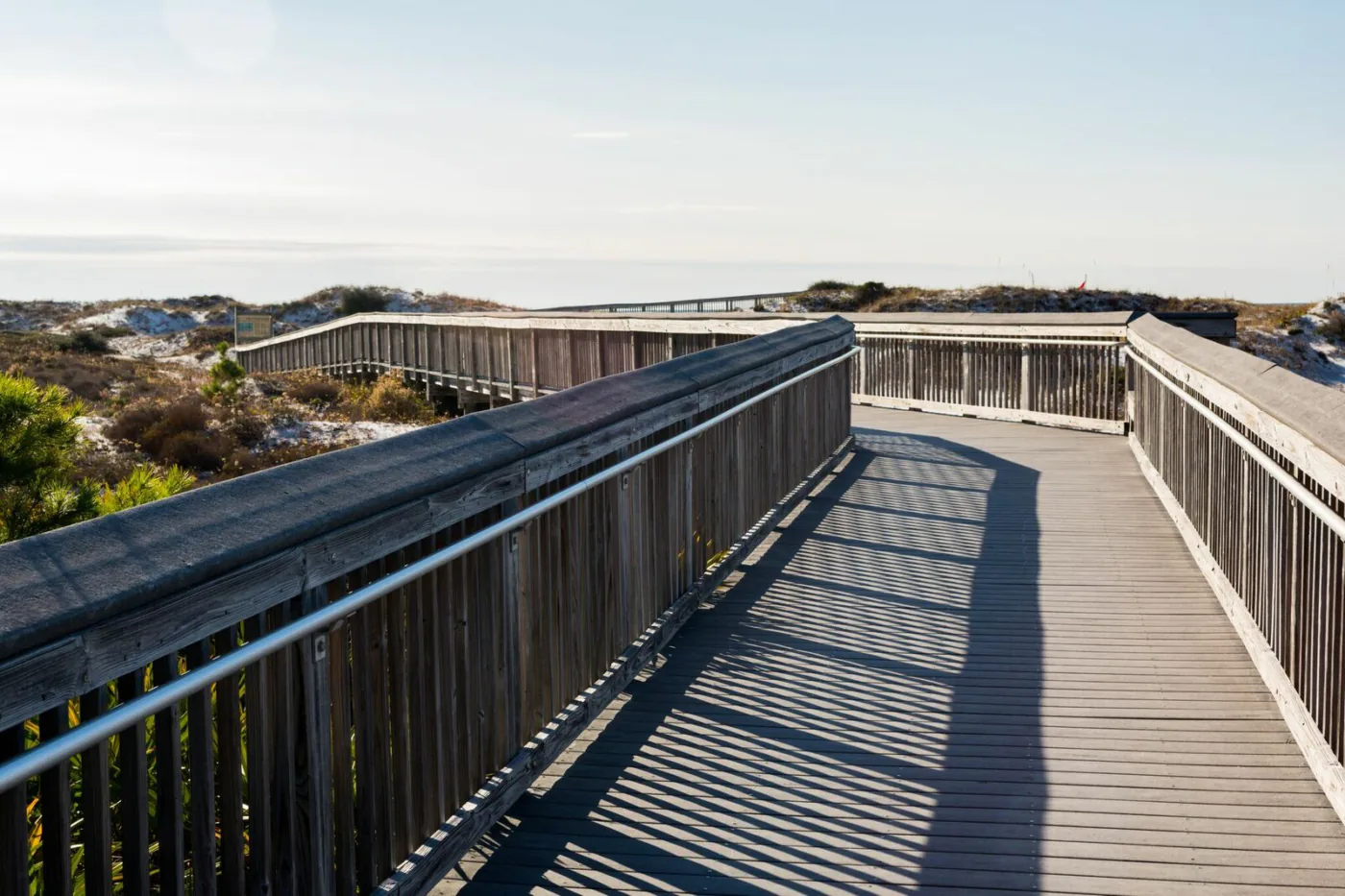Bask on Northwest Florida Beaches
Without a doubt, spectacular allure best describes Northwest Florida’s beaches. These extraordinary pieces of paradise, situated on the Gulf of Mexico, are a must-see for everyone. Our beaches are one of the few places in the world where the squeaky white sand glistens against the sun. Find unspoiled quiet shores, neighborhood communities, and lively beachside patio entertainment that continues to bring beach lovers back to these amazing vacation destinations. Florida State Parks claims a portion of these beaches spread throughout the coastline. They are considered a hot spot for day-trippers or campers. Find a state park located on Northwest Florida beaches by clicking here.
Cape San Blas
Cape San Blas is a hidden gem in Northwest Florida. It is located on St. Joseph Peninsula, a narrow stretch of land extending out from Port St. Joe and curving around St. Joseph Bay. The “Cape,” as most call it, was named the best beach in America (2002) by Dr. Stephen P. Leatherman (a.k.a. Dr. Beach) for its pristine beaches. Better still, the St. Joseph Bay Aquatic Preserve remains one of the least populated coastal areas in the state where residents and visitors have an excellent opportunity to experience nature.

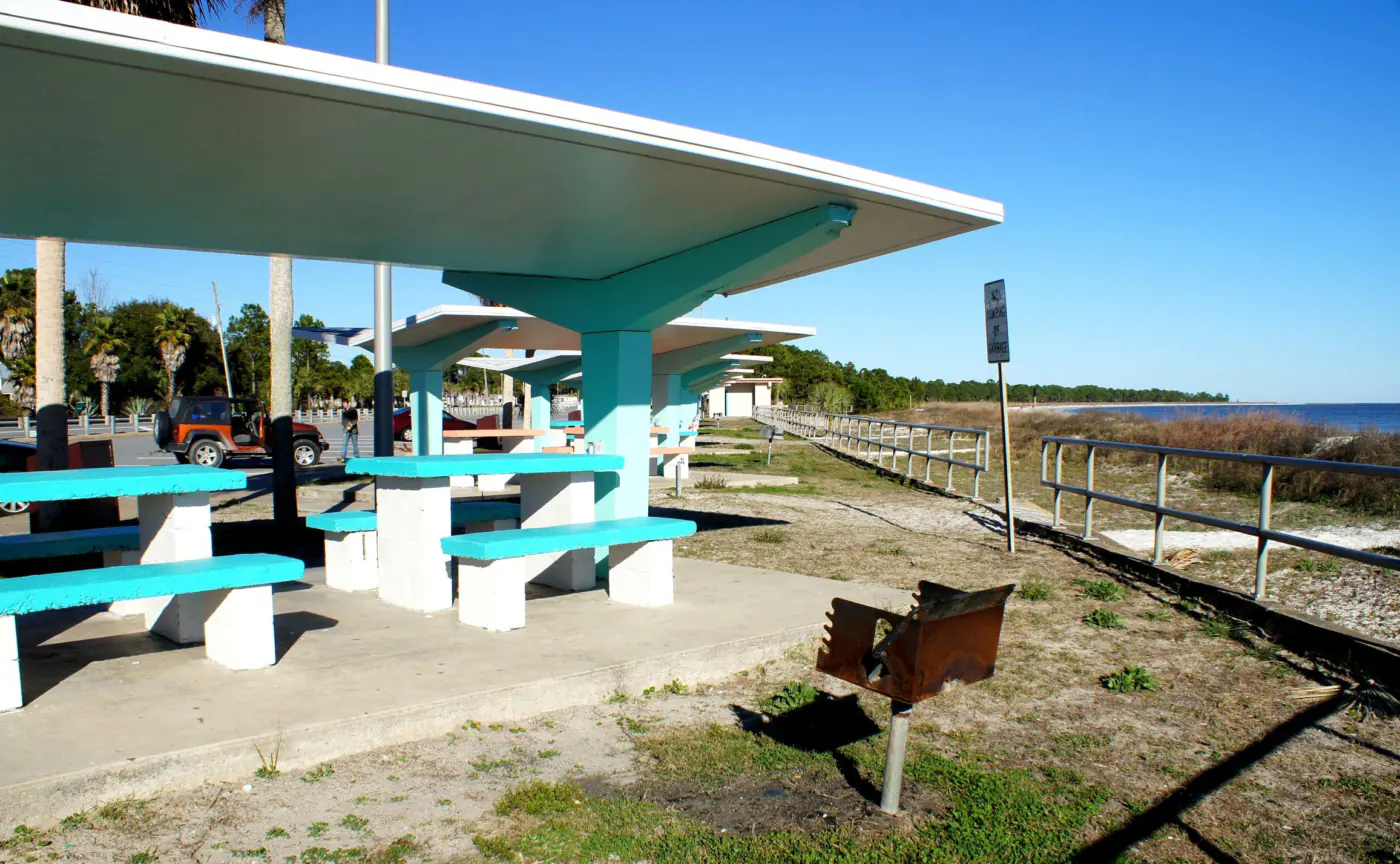
Carrabelle Beach
Carrabelle Beach is located 1.5 miles west of Carrabelle’s city center on Highway 98. It is directly across the street from Carrabelle Beach RV Resort. You’ll recognize the public beach by the recently renovated “Old Florida Style” covered areas and picnic tables. There are plenty of convenient parking places, outdoor showers, bathroom facilities, and grills.
The beach center can be a little crowded on busy summer days. Keep in mind “crowded” on the Forgotten Coast is very different from “crowded” in larger areas. There is plenty of space on this curving beach to find your own sand and solitude.
Carrabelle Beach is very pet-friendly and an excellent beach for nature-watching. Dolphin hunt mullet up close in the surf in a spectacular display. Shorebirds flit and search for food, and it’s a hot spot for birders during the spring and fall migrations.
Image Courtesy of Carrabelle Chamber.
St. Joe Beach
Turn back time along the western edge of Gulf County, literally. It’s here that the Eastern Time Zone meets the Central Time Zone.
The area including St. Joe Beach and WindMark Beach is often called “The Beaches” and is the perfect place for a quick trip out to white-sand beaches from Port St. Joe, just 10 minutes away. This laid back beach borders Bay County at the time zone line.
The shoreline faces west for spectacular sunsets and is home to many vacation homes and pet-friendly beaches. With local seafood restaurants located nearby, it’s a great place for old fashion relaxation. Take time to explore WindMark Beach with nearly four miles of paved walking and biking trails along the water.

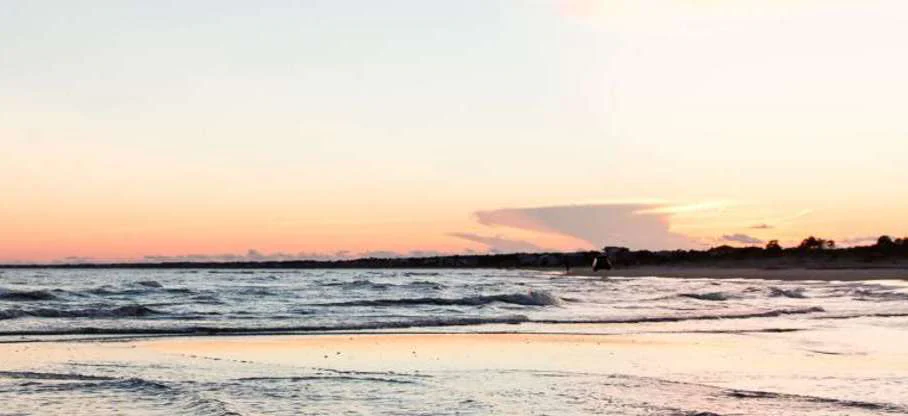
Indian Pass
Just eight miles from Port St. Joe, Indian Pass feels like a world away. To vacation here is to experience Old Florida in a natural beach setting. An eclectic array of beach homes line the miles of wide, pet-friendly beaches. Beach driving is allowed with a permit, and it’s not unusual to see families fishing, crabbing, grilling, or sitting around an evening bonfire. This is also a great place for a relaxing horseback ride along the beach.
At land’s end, you’ve reached Indian Pass Campground, located directly on Indian Pass and Apalachicola Bay. Across the water you’ll see St. Vincent Island, a national wildlife refuge, accessible only by boat. The natural beach setting makes for great shelling and shorebird watching.
Apalachicola oysters may be world-famous but Indian Pass Lagoon oysters are some of the best you’ll ever taste. The Gulf around Indian Pass is from a different time – flavorful, rustic, and raw in its beauty. Speckled Trout, Redfish, Flounder, and Pompano are an easy catch for the beach fisherman.
Mexico Beach
Geologically, our beaches are quite rare. The sand found on the majority of the world’s beaches contains a mixture of approximately twenty different materials. The sugar-like white sand found in Mexico Beach, however, contains only one: evenly sized quartz crystals. This quartz sand originated millions of years ago in the Appalachian Mountain range. Because our area lacks the influence of silt-bearing rivers, our sand remains pure and white. This white quartz sand is highly reflective—which is the reason our beaches remain cool, even during the hottest summer months!
The City of Mexico Beach has five miles of beach available for residents and visitors to enjoy. Public beach access is easy and abundant with direct park access and a number of easy-to-spot walkovers connecting Highway 98 to the beach. Since Hurricane Michael in October of 2018, the city has worked hard to re-nourish and rebuild the beaches and access points, and the beach is open and ready for visitors to come and enjoy. It’s time to make memories that last forever on the Unforgettable Coast!

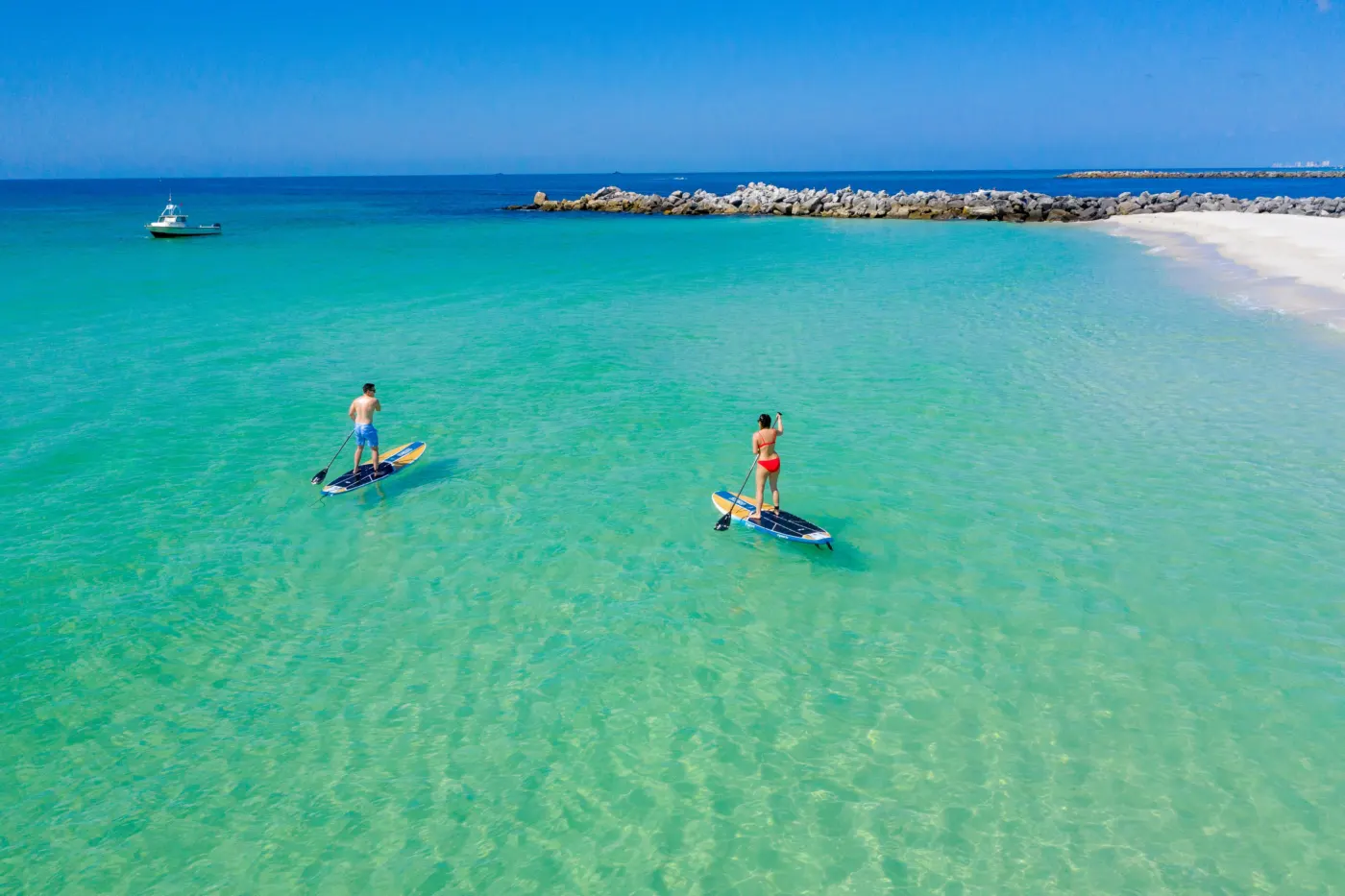
Panama City Beach
The beach is more than a destination: it is a way of life. In Panama City Beach, we are happy to share fabulous beaches with you and your family.
With 27 miles of beach to choose from, we are sure to have a beach you’ll love. Come feel the sand between your toes, so soft and brilliant white you could almost swear it’s sugar. In reality, our enchanting sands are quartz, finely ground by the Gulf and bleached white by the sun.
Not all beaches are created equal. With the variety of experiences and almost 100 access points, you won’t want to miss out on our beaches, some of the best in all of the Sunshine State.
Beaches of South Walton
Finding your perfect beach is easy when you have so many choices. South Walton has more than 50 beach and bay access locations along its 26 miles of shoreline. Types of access vary, so be sure to check before you go. Lifeguards are on duty at several of the regional beaches between the months of March and September.
Regional Beach Access – Includes parking, restrooms, and several are ADA accessible. Each regional beach access point also has a flag indicating current surf conditions.
Neighborhood Beach Access – Neighborhood beach access is primarily for walk-up traffic. Many of these also have flags indicating current surf conditions.
Bay and Lake Access – Some offer boat ramps, parking, restrooms, and playgrounds.

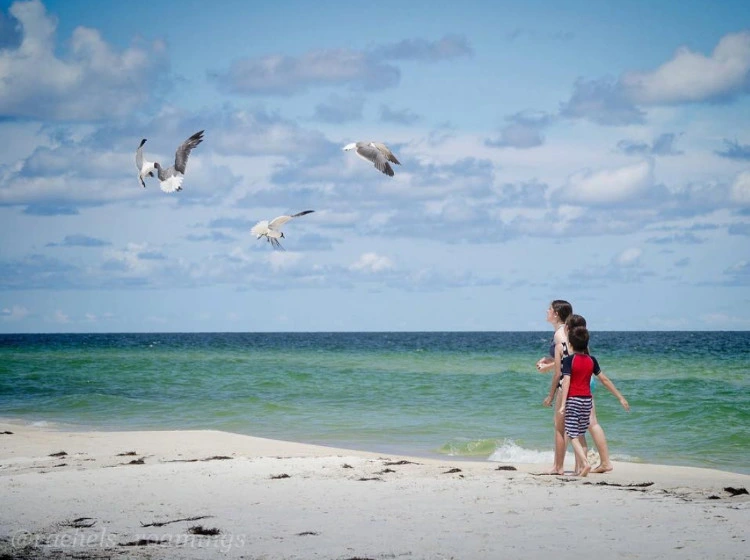
St. George Island Beaches
St. George Island Florida is a beautiful 22-mile barrier island in the Gulf of Mexico. Home to the most unspoiled, serene beaches in the Sunshine State, St. George Island located on Florida’s Forgotten Coast offers plenty of things to do for every visitor. No high rises anywhere on this untouched island. Just a laid-back attitude, breathtaking beaches, and unspoiled nature. The uncrowded beaches are perfect for family-friendly activities—from swimming, fishing and paddling in the clear gulf waters to shelling, castle-building and relaxing on the sugar-white sand.
Northwest Florida Beaches State Parks
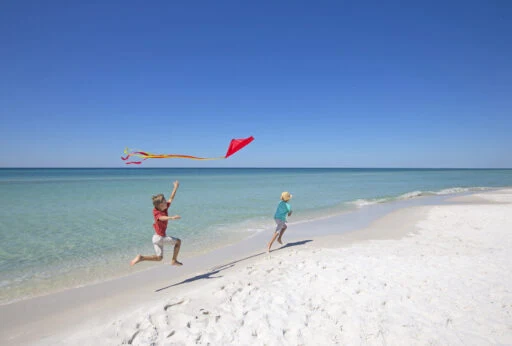
Grayton Beach State Park
Grayton Beach consistently ranks among the most beautiful and pristine beaches in the United States. The nearly 2,000-acre park features a boat ramp that provides access to the lake’s brackish waters for both freshwater and saltwater fishing. Visitors can paddle a canoe, paddleboard, or kayak on scenic Western Lake to get a closer look at a salt marsh ecosystem. A nature trail winds through a coastal forest where Scrub Oaks and Magnolias stand, bent and twisted into dramatic shapes by the salt winds. Hikers and bicyclists can enjoy more than four miles of trails throughout the pine flatwoods. Options for overnight stays include modern cabins and a full-facility campground. It is no wonder why Grayton Beach ranks among the top Florida State Parks.
St. Andrews State Park
Recently recovered from the wrath of hurricane Michael, St. Andrews State Park’s beauty is intact drawing locals and visitors to this scenic spot. Located at the corners of the Gulf of Mexico and Grand Lagoon in Panama City, this former military location has one and a half miles of sugary sand beaches. Locals love to fish from the jetties or piers. The park has full facility campsites. Take a day trip to close by Shell Island with shuttles offered by Shell Island Boat Tours.
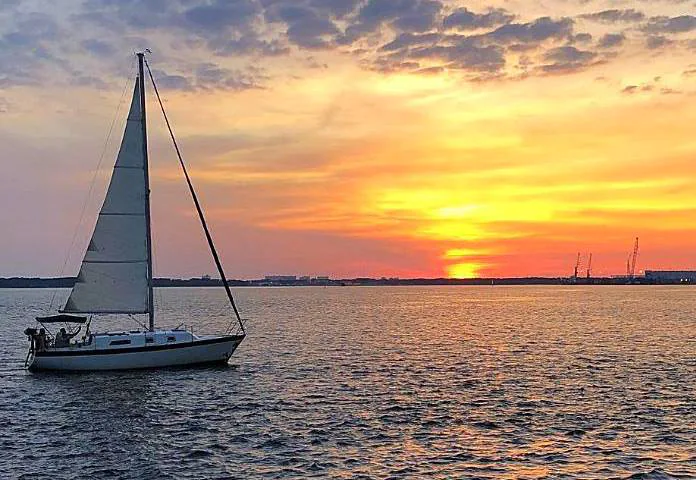
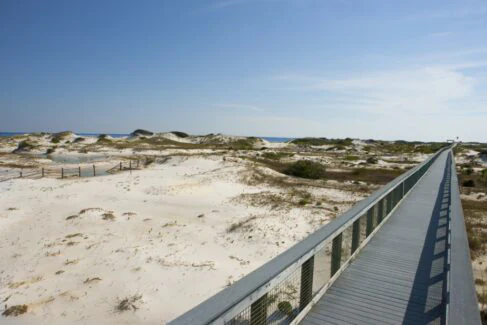
Deer Lake State Park
Deer Lake State Park shares its name with the coastal dune lake within its boundaries. Coastal dune lakes are extremely rare worldwide and in the United States, they occur only along the Florida Gulf Coast. Southern Magnolias, Golden Asters, Woody Goldenrods, and Scrub Oaks can be seen in this coastal dune habitat. Rare plants such as Gulf Coast Lupine, Spoonflower, Pitcher Plants, and Curtiss’ Sand Grass – one of the largest populations found in Florida – are found in the park. Visitors may see splashes of color from summer wildflowers or some of the many species of resident or migratory birds and butterflies. A boardwalk across the dunes offers easy access to the beach where visitors can picnic, swim, and fish. It also offers a spectacular view of the dune ecosystem, one of 11 natural communities found in the park.
St. George Island State Park
St. George Island State Park is 1,962 acres of long, narrow barrier island, with miles of mainly undeveloped beaches, dunes, and emerald waters that provide the perfect setting for a day at the beach. Few parks offer better opportunities for Gulf Coast shelling. Anglers can fish for Flounder, Redfish, Sea Trout, Pompano, Whiting, and Spanish Mackerel. During spring migration, birders should look for songbirds in the small oaks near the youth camp area and park campground. Shorebirds such as the Snowy Plover, Least Tern, Black Skimmer, and Willet often nest along the park’s sandy shores and grass flats. Watch for Gopher Tortoise near the youth camp area. Sea turtles nest along the park beaches, with Loggerhead Turtles being the most common. The campground features full-facility campsites as well as a primitive campsite that can be accessed by trail or by private boat.
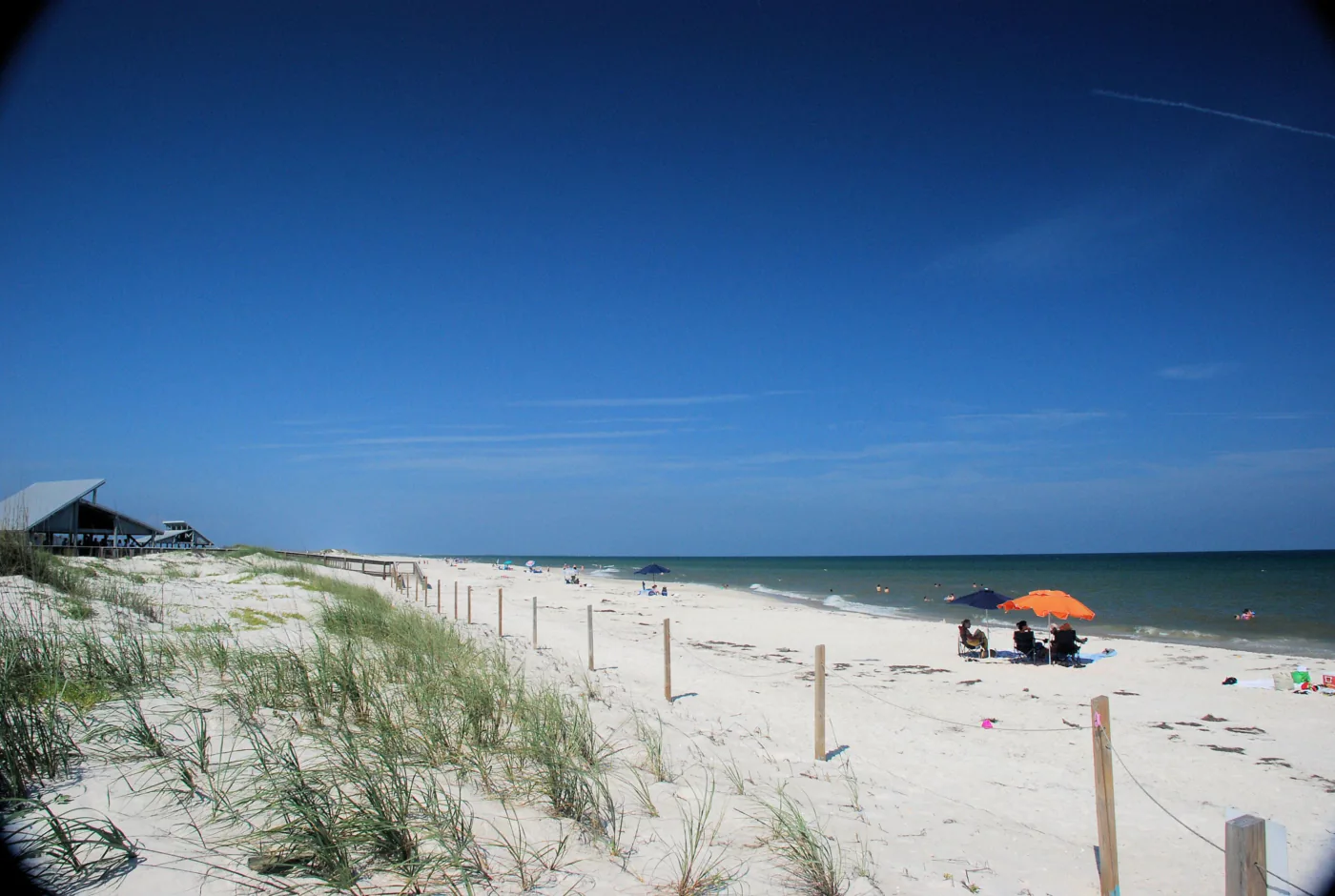

T.H. Stone Memorial St. Joseph Peninsula State Park
Looking across the bay from St. Joe Beach, many have wondered about the island in the distance. It’s the tip of T. H. Stone Memorial St. Joseph Peninsula State Park. The only way to reach the tip is by boat where you’ll find sheltered, clear water and white sandy beaches known for great shelling.
Topsail Hill Preserve State Park
Topsail Hill is full of natural resources including 3.2 miles of secluded white sand beaches with majestic dunes over 25 feet tall. Three rare coastal dune lakes provide excellent freshwater fishing. Lakes, pristine beaches, old-growth Long Leaf Pines, Sand Pine Scrub, and a variety of wetlands make this a bird-watching and hiking paradise. Visitors may bike, walk, or enjoy a quick ride to the beach on the tram to swim, fish, sunbathe, or beachcomb. The Gregory E. Moore RV resort features a (non-heated) swimming pool and shuffleboard courts. Furnished bungalows are available for weekly stays. A camp store offers a variety of camping items.
